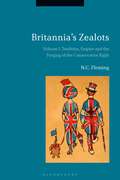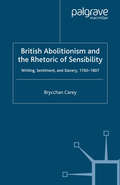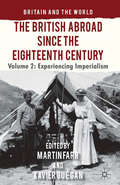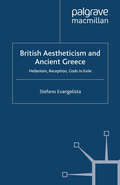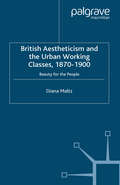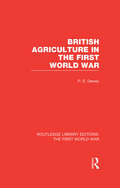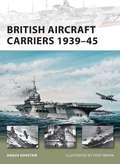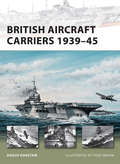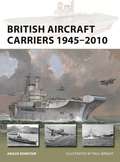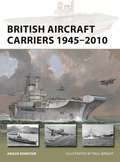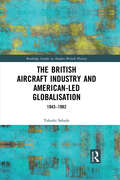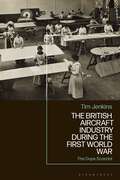- Table View
- List View
Britannia's Embrace: Modern Humanitarianism and the Imperial Origins of Refugee Relief
by Caroline ShawOn the eve of the American Revolution, the refugee was, according to British tradition, a Protestant who sought shelter from continental persecution. By the turn of the twentieth century, however, British refuge would be celebrated internationally as being open to all persecuted foreigners. Britain had become a haven for fugitives as diverse as Karl Marx and Louis Napoleon, Simón Bolívar and Frederick Douglass. How and why did the refugee category expand? How, in a period when no law forbade foreigners entry to Britain, did the refugee emerge as a category for humanitarian and political action? Why did the plight of these particular foreigners become such a characteristically British concern? Current understandings about the origins of refuge have focused on the period after 1914. Britannia's Embrace offers the first historical analysis of the origins of this modern humanitarian norm in the long nineteenth century. At a time when Britons were reshaping their own political culture, this charitable endeavor became constitutive of what it meant to be liberal on the global stage. Like British anti-slavery, its sister movement, campaigning on behalf of foreign refugees seemed to give purpose to the growing empire and the resources of empire gave it greater strength. By the dawn of the twentieth century, British efforts on behalf of persecuted foreigners declined precipitously, but its legacies in law and in modern humanitarian politics would be long-lasting. In telling this story, Britannia's Embrace puts refugee relief front and center in histories of human rights and international law and of studies of Britain in the world. In so doing, it describes the dynamic relationship between law, resources, and moral storytelling that remains critical to humanitarianism today.
Britannia's Embrace: Modern Humanitarianism and the Imperial Origins of Refugee Relief
by Caroline ShawOn the eve of the American Revolution, the refugee was, according to British tradition, a Protestant who sought shelter from continental persecution. By the turn of the twentieth century, however, British refuge would be celebrated internationally as being open to all persecuted foreigners. Britain had become a haven for fugitives as diverse as Karl Marx and Louis Napoleon, Simón Bolívar and Frederick Douglass. How and why did the refugee category expand? How, in a period when no law forbade foreigners entry to Britain, did the refugee emerge as a category for humanitarian and political action? Why did the plight of these particular foreigners become such a characteristically British concern? Current understandings about the origins of refuge have focused on the period after 1914. Britannia's Embrace offers the first historical analysis of the origins of this modern humanitarian norm in the long nineteenth century. At a time when Britons were reshaping their own political culture, this charitable endeavor became constitutive of what it meant to be liberal on the global stage. Like British anti-slavery, its sister movement, campaigning on behalf of foreign refugees seemed to give purpose to the growing empire and the resources of empire gave it greater strength. By the dawn of the twentieth century, British efforts on behalf of persecuted foreigners declined precipitously, but its legacies in law and in modern humanitarian politics would be long-lasting. In telling this story, Britannia's Embrace puts refugee relief front and center in histories of human rights and international law and of studies of Britain in the world. In so doing, it describes the dynamic relationship between law, resources, and moral storytelling that remains critical to humanitarianism today.
Britannia's Zealots, Volume I: Tradition, Empire and the Forging of the Conservative Right
by N. C. FlemingBritannia's Zealots, Volume I opens the first longitudinal study to examine the Conservative Right from the late-19th century to the present day. British Conservatism has always contained a significant section fundamentally opposed to progressive reform. A permanent minority in Parliament, dissident right-wing Conservatives nevertheless had allies in the press and sympathy among grassroots party members enabling them to create crises in the media and at party meetings.N.C. Fleming charts the evolution of reactionary politics from its preoccupation with the Protestant constitution to its fixation with the prestige and strength of Britain's global empire. He examines the overlooked ways in which Conservative Right parliamentarians shaped their party's policies and propaganda, in and out of office, and their relationships with the press and ordinary activists. He seeks to demonstrate that this influence could be circumscribing, and on occasion highly disruptive, with consequences which remain relevant for today's Conservative party. Britannia's Zealots, Volume I will be of great interest to academics and students of British history, right-wing politics, imperialism, and 20th century history.
Britannia's Zealots, Volume I: Tradition, Empire and the Forging of the Conservative Right
by N. C. FlemingBritannia's Zealots, Volume I opens the first longitudinal study to examine the Conservative Right from the late-19th century to the present day. British Conservatism has always contained a significant section fundamentally opposed to progressive reform. A permanent minority in Parliament, dissident right-wing Conservatives nevertheless had allies in the press and sympathy among grassroots party members enabling them to create crises in the media and at party meetings.N.C. Fleming charts the evolution of reactionary politics from its preoccupation with the Protestant constitution to its fixation with the prestige and strength of Britain's global empire. He examines the overlooked ways in which Conservative Right parliamentarians shaped their party's policies and propaganda, in and out of office, and their relationships with the press and ordinary activists. He seeks to demonstrate that this influence could be circumscribing, and on occasion highly disruptive, with consequences which remain relevant for today's Conservative party. Britannia's Zealots, Volume I will be of great interest to academics and students of British history, right-wing politics, imperialism, and 20th century history.
Britische Geschichte für Dummies (Für Dummies)
by Seán LangSchillernd ist sie, die Britische Geschichte. Erst waren dort die Kelten, dann unterwarfen die Römer die Insel, auf sie folgten die Angelsachsen und schließlich die Normannen. Schlussendlich entwickelte sich Britannien zu einem Weltreich. Warum? Sean Lang erzählt die Geschichte um Boudicca, Richard Löwenherz, Heinrich VIII. und seine Frauen, Maria Stuart und Elizabeth I. Er schildert stets mit einem Augenzwinkern Britanniens Weg zur Macht und lässt dabei auch die Schurken und Schwerenöter nicht aus. So können Sie sich mit diesem Buch schnell und umfassend über die Geschichte unserer Freunde auf der Insel informieren.
Britische Soziologie
by John ScottDieser Band bietet eine umfassende Geschichte der Soziologie in Großbritannien und verfolgt die Entwicklungen der Disziplin im institutionellen und politischen Kontext.Nachdem er die frühe Entwicklung des Fachs als intellektuelles Feld in empirischer und idealistischer Philosophie, Evolutionismus, Sozialismus und statistischen Untersuchungen nachgezeichnet hat, legt Scott den Weg der Soziologie als institutionalisierte Disziplin dar. Das Buch zeichnet die Ausbreitung des Fachs von der ersten soziologischen Abteilung an der London School of Economics bis hin zur Abdeckung des gesamten Landes nach und geht auf die Gründung bedeutender Berufsverbände und Fachzeitschriften sowie auf die Auswirkungen des Feminismus und des politischen Wandels ein. Scott gibt auch einen Überblick über die theoretische Auseinandersetzung mit dem Marxismus, dem Interaktionismus, dem Feminismus und dem Poststrukturalismus sowie über die Entwicklung der Disziplin durch Forschungsstudien zu Kriminalität, Rasse und ethnischer Zugehörigkeit, Gemeinschaft, Schichtung, Gesundheit, Sexualität und Arbeit.Vor dem Hintergrund eines sich wandelnden politischen Kontextes, in dem der Neoliberalismus und die Globalisierung zunehmen, und mit Blick auf die anhaltende Suche nach "neuen Wegen" leistet dieser Band eine Beitrag zur Verortung der Soziologie in einem globalen Kontext.
British (Sir Tony Robinson's Weird World of Wonders #3)
by Sir Tony RobinsonIn Sir Tony Robinson's Weird World of Wonders British, Sir Tony Robinson takes you on a headlong gallop through time, pointing out all the most important, funny, strange, amazing, entertaining, smelly and disgusting bits about the British! It's history, but not as we know it!Find out everything you ever needed to know in this brilliant, action-packed, fact-filled book, including:- How to avoid scurvy- Why bright red isn't the best colour for a soldier's uniform- Why not being able to swim was considered an advantage, and- How to cure the most gruesome tropical diseasesFor more funny history facts discover Greeks and Romans.
British Abolitionism and the Rhetoric of Sensibility: Writing, Sentiment and Slavery, 1760-1807 (Palgrave Studies in the Enlightenment, Romanticism and Cultures of Print)
by B. CareyBritish Abolitionism and the Rhetoric of Sensibility argues that participants in the late eighteenth-century slavery debate developed a distinct sentimental rhetoric, using the language of the heart to powerful effect in the most important political and humanitarian battle of the time. Examining both familiar and unfamiliar texts, including poetry, novels, journalism, and political writing, Carey shows that salve-owners and abolitionists alike made strategic use of the rhetoric of sensibility in the hope of influencing a reading public thoroughly immersed in the 'cult of feeling'.
The British Abroad Since the Eighteenth Century, Volume 1: Travellers and Tourists (Britain and the World)
by Xavier GuéganThis book considers the British travelling beyond their isles over the last three hundred years, and through a range of interdisciplinary perspectives reflects on their taste for discovery and self-discovery both through the exploration – and exploitation – of other lands and peoples.
The British Abroad Since the Eighteenth Century, Volume 2: Experiencing Imperialism (Britain and the World)
by Xavier GuéganThis is a collection of twelve interdisciplinary essays from international scholars concerned with examining the British experience of Empire since the eighteenth century. It considers themes such as national identity, modernity, culture, social class, diplomacy, consumerism, gender, postcolonialism, and perceptions of Britain's place in the world.
British Aestheticism and Ancient Greece: Hellenism, Reception, Gods in Exile (Palgrave Studies in Nineteenth-Century Writing and Culture)
by S. EvangelistaThis book is the first comprehensive study of the reception of classical Greece among English aesthetic writers of the nineteenth century. By exploring this history of reception, it aims to give readers a new and fuller understanding of literary aestheticism, its intellectual contexts, and its challenges to mainstream Victorian culture.
British Aestheticism and the Urban Working Classes, 1870-1900: Beauty for the People (Palgrave Studies in Nineteenth-Century Writing and Culture)
by D. MaltzThis cultural study reveals the interdependence between British Aestheticism and late-Victorian social-reform movements. Following their mentor John Ruskin who believed in art's power to civilize the poor, cultural philanthropists promulgated a Religion of Beauty as they advocated practical schemes for tenement reform, university-settlement education, Sunday museum opening, and High Anglican revival. Although subject to novelist's ambivalent, even satirical, representations, missionary aesthetes nevertheless constituted an influential social network, imbuing fin-de-siecle artistic communities with political purpose and political lobbies with aesthetic sensibility.
British Agriculture in the First World War (Routledge Library Editions: The First World War)
by Peter DeweyThis volume comprehensively describes how British farmers coped with the problems of shortage of labour and other factors of production, as well as assessing how well agriculture performed as a supplier of food to the nation. Use of previously neglected records provides much evidence on issues such as the deployment of substitute labour and the introduction of the tractor into British farming for the first time. Challenging accepted view on the period, the author shows that shortages of labour and other factors of production had only a slight effect on farm output and the national food supply.
British Agriculture in the First World War (Routledge Library Editions: The First World War)
by Peter DeweyThis volume comprehensively describes how British farmers coped with the problems of shortage of labour and other factors of production, as well as assessing how well agriculture performed as a supplier of food to the nation. Use of previously neglected records provides much evidence on issues such as the deployment of substitute labour and the introduction of the tractor into British farming for the first time. Challenging accepted view on the period, the author shows that shortages of labour and other factors of production had only a slight effect on farm output and the national food supply.
British Air Power: The Doctrinal Path to Jointery
by Viktoriya FedorchakBritish Air Power demonstrates how the Royal Air Force sought to adapt in regard to the roles it could play and the conflicts in which it could be used, as well as the evolution of air power doctrine at a time of rapid changes in national politics and in the international arena. The development of new concepts and theories, the evaluation of operational experience, the political environment and budgetary cuts, and the role of academics and personalities in development of doctrine are thus all explored to show changes in strategic thinking regarding air power.Fedorchak further examines the influence of jointery – the process of co-operation between the army, navy and air force – on thinking, conceptualising, teaching and using air power in recent operations in Afghanistan, Iraq, Libya and Syria. A contemporary complement to more historical studies, British Air Power provides a very detailed look at the development of air-land doctrine in the RAF since the turn of the century.
British Air Power: The Doctrinal Path to Jointery
by Viktoriya FedorchakBritish Air Power demonstrates how the Royal Air Force sought to adapt in regard to the roles it could play and the conflicts in which it could be used, as well as the evolution of air power doctrine at a time of rapid changes in national politics and in the international arena. The development of new concepts and theories, the evaluation of operational experience, the political environment and budgetary cuts, and the role of academics and personalities in development of doctrine are thus all explored to show changes in strategic thinking regarding air power.Fedorchak further examines the influence of jointery – the process of co-operation between the army, navy and air force – on thinking, conceptualising, teaching and using air power in recent operations in Afghanistan, Iraq, Libya and Syria. A contemporary complement to more historical studies, British Air Power provides a very detailed look at the development of air-land doctrine in the RAF since the turn of the century.
British Airborne Soldier vs Waffen-SS Soldier: Arnhem 1944 (Combat)
by David GreentreeOperation Market Garden was an Allied plan to try and end the war before the end of 1944, and relied on landing airborne troops to secure bridges over the Rhine bridges in the Netherlands. Critical to this plan were the glider troops of Britain's 1st Airlanding Brigade. Short on heavy weapons and not trained in street fighting, the glider troops were meant to secure and defend the Allied perimeter around Arnhem as the parachute brigades fought their way into the city. Facing the airborne forces were understrength Waffen-SS units that were hastily formed into ad hoc battle groups, some supported by armour. The troops on both sides would have their tactical flexibility and powers of endurance tested to the limit in the bitter actions that ensued. Employing first-hand accounts and drawing upon the latest research, David Greentree tells the story of the glider troops' dogged defence of the Allied perimeter at Arnhem, and the Waffen-SS forces' efforts to overcome them.
British Airborne Soldier vs Waffen-SS Soldier: Arnhem 1944 (Combat)
by David GreentreeOperation Market Garden was an Allied plan to try and end the war before the end of 1944, and relied on landing airborne troops to secure bridges over the Rhine bridges in the Netherlands. Critical to this plan were the glider troops of Britain's 1st Airlanding Brigade. Short on heavy weapons and not trained in street fighting, the glider troops were meant to secure and defend the Allied perimeter around Arnhem as the parachute brigades fought their way into the city. Facing the airborne forces were understrength Waffen-SS units that were hastily formed into ad hoc battle groups, some supported by armour. The troops on both sides would have their tactical flexibility and powers of endurance tested to the limit in the bitter actions that ensued. Employing first-hand accounts and drawing upon the latest research, David Greentree tells the story of the glider troops' dogged defence of the Allied perimeter at Arnhem, and the Waffen-SS forces' efforts to overcome them.
British Aircraft Carriers 1939–45 (New Vanguard)
by Tony Bryan Angus KonstamWith war against Germany looming, Britain pushed forward its carrier program in the late 1930s. In 1938, the Royal Navy launched the HMS Ark Royal, its first-ever purpose-built aircraft carrier. This was quickly followed by others, including the highly-successful Illustrious class. Smaller and tougher than their American cousins, the British carriers were designed to fight in the tight confines of the North Sea and the Mediterranean. Over the next six years, these carriers battled the Axis powers in every theatre, attacking Italian naval bases, hunting the Bismark, and even joining the fight in the Pacific. This book tells the story of the small, but resilient, carriers and the crucial role they played in the British war effort.
British Aircraft Carriers 1939–45 (New Vanguard #168)
by Tony Bryan Angus KonstamWith war against Germany looming, Britain pushed forward its carrier program in the late 1930s. In 1938, the Royal Navy launched the HMS Ark Royal, its first-ever purpose-built aircraft carrier. This was quickly followed by others, including the highly-successful Illustrious class. Smaller and tougher than their American cousins, the British carriers were designed to fight in the tight confines of the North Sea and the Mediterranean. Over the next six years, these carriers battled the Axis powers in every theatre, attacking Italian naval bases, hunting the Bismark, and even joining the fight in the Pacific. This book tells the story of the small, but resilient, carriers and the crucial role they played in the British war effort.
British Aircraft Carriers 1945–2010 (New Vanguard)
by Angus KonstamThe history of the Royal Navy flagships that led the fleet through the Cold War, ensured victory in the Falklands War, and saw action in Iraq and the Balkans.In 1945, at the end of World War II, the Royal Navy's carrier fleet proved essential to the post-war world. Royal Navy carriers fought in the Korean War with the UN fleet, in the debacle at Suez, and in British operations in the last days of Empire, in Malaya, Borneo and Aden. But most famously, they were the key to the Royal Navy's victory in the Falklands campaign, and they went on to fight in the two Iraq wars.Illustrated throughout with new profiles of the key carriers and their development, as well as a cutaway of HMS Victorious and superb new illustrations of the carriers in action, this book explains how the Royal Navy's air power changed throughout the Cold War and beyond. Renowned naval historian Angus Konstam explains how the World War II carriers were rebuilt in a pioneering modernization that allowed them to operate a new generation of naval jets. As carriers became more expensive to operate, the Royal Navy had to scrap its conventional fast jets and introduce a new generation of light carriers designed for the innovative Harrier 'jump jet'. When the Falklands War broke out, it was one of these new carriers and one veteran carrier from World War II that gave the Task Force the fighters it needed to defend itself in hostile waters and retake the islands.Covering a period of dramatic change for the Royal Navy, this book is a history of the Royal Navy's most important ships throughout the Cold War, the retreat from Empire, and the Falklands and Iraq wars, up to the moment Royal Navy fixed-wing air power was temporarily axed in 2010.
British Aircraft Carriers 1945–2010 (New Vanguard)
by Angus KonstamThe history of the Royal Navy flagships that led the fleet through the Cold War, ensured victory in the Falklands War, and saw action in Iraq and the Balkans.In 1945, at the end of World War II, the Royal Navy's carrier fleet proved essential to the post-war world. Royal Navy carriers fought in the Korean War with the UN fleet, in the debacle at Suez, and in British operations in the last days of Empire, in Malaya, Borneo and Aden. But most famously, they were the key to the Royal Navy's victory in the Falklands campaign, and they went on to fight in the two Iraq wars.Illustrated throughout with new profiles of the key carriers and their development, as well as a cutaway of HMS Victorious and superb new illustrations of the carriers in action, this book explains how the Royal Navy's air power changed throughout the Cold War and beyond. Renowned naval historian Angus Konstam explains how the World War II carriers were rebuilt in a pioneering modernization that allowed them to operate a new generation of naval jets. As carriers became more expensive to operate, the Royal Navy had to scrap its conventional fast jets and introduce a new generation of light carriers designed for the innovative Harrier 'jump jet'. When the Falklands War broke out, it was one of these new carriers and one veteran carrier from World War II that gave the Task Force the fighters it needed to defend itself in hostile waters and retake the islands.Covering a period of dramatic change for the Royal Navy, this book is a history of the Royal Navy's most important ships throughout the Cold War, the retreat from Empire, and the Falklands and Iraq wars, up to the moment Royal Navy fixed-wing air power was temporarily axed in 2010.
The British Aircraft Industry and American-led Globalisation: 1943-1982 (Routledge Studies in Modern British History)
by Takeshi SakadeSakade challenges the narrative that the focus of British manufacturing went "from Empire to Europe" and argues rather that, following the Second World War, the key relationship was in fact trans-Atlantic. There is a commonly accepted belief that, during the twentieth century, British manufacturing declined irreparably, that Britain lost its industrial hegemony. But this is too simplistic. In fact, in the decades after 1945, Britain staked out a new role for itself as a key participant in a US-led process of globalisation. Far from becoming merely a European player, the UK actually managed to preserve a key share in a global market, and the British defence industry was, to a large extent, successfully rehabilitated. Sakade returns to the original scholarly parameters of the decline controversy, and especially questions around post-war decline in the fields of high technology and the national defence industrial base. Using the case of the strategically critical military and civil aircraft industry, he argues that British industry remained relatively robust. A valuable read for historians of British aviation and more widely of 20th century British Industry.
The British Aircraft Industry and American-led Globalisation: 1943-1982 (Routledge Studies in Modern British History)
by Takeshi SakadeSakade challenges the narrative that the focus of British manufacturing went "from Empire to Europe" and argues rather that, following the Second World War, the key relationship was in fact trans-Atlantic. There is a commonly accepted belief that, during the twentieth century, British manufacturing declined irreparably, that Britain lost its industrial hegemony. But this is too simplistic. In fact, in the decades after 1945, Britain staked out a new role for itself as a key participant in a US-led process of globalisation. Far from becoming merely a European player, the UK actually managed to preserve a key share in a global market, and the British defence industry was, to a large extent, successfully rehabilitated. Sakade returns to the original scholarly parameters of the decline controversy, and especially questions around post-war decline in the fields of high technology and the national defence industrial base. Using the case of the strategically critical military and civil aircraft industry, he argues that British industry remained relatively robust. A valuable read for historians of British aviation and more widely of 20th century British Industry.
The British Aircraft Industry during the First World War: The Dope Scandal
by Dr Tim JenkinsIn this book, Tim Jenkins examines the factory worker poisonings and suspect government procurement procedures that resulted in Allied success in the air during First World War.The early development of aircraft during World War I was an important yet dangerous part of the war effort seen in the First World War and although many descriptions of daring aerial combat have been written, the risk to those involved in the manufacture of such machines remains less well known. Tetrachlorethane, a poisonous solvent contained in aircraft dope, was responsible for a number of civilian deaths in aircraft factories and although the British knew the substance to be lethal, they were much slower than their American and German counterparts in sourcing alternatives. In this groundbreaking book, Tim Jenkins explores the use of Tetrachlorethan and brings to light the concerns and warnings voiced by the international medical profession. His examination considers the government's reasons for its use of the poisonous solvent to create a compelling yet scholarly account which takes in corruption, negligence and wartime manufacture. This book will be vital to scholars studying military production during the First World War.

